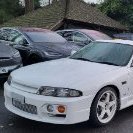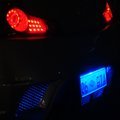Announcements
-
Similar Content
-
Latest Posts
-
For anyone interested, the Way Back Machine has that Japanese website archived with pictures, etc: https://web.archive.org/web/20051023225805fw_/http://www.a31cefiro.com/air_con.htm "Simply swapping the wiring of the harness will not allow it to function properly. For the outdoor air sensor and sunlight sensor, disconnect the wiring connected to CN1-11 of the air conditioning harness from the harness and connect the sensor side wiring to earth. For the indoor air sensor, disconnect the wiring connected to CN2-3 of the air conditioning harness from the harness and connect the sensor side wiring to earth. The connector PIN numbers listed here are the genuine A31 PIN numbers. To avoid incorrect wiring, check with a tester before wiring. Also, disconnect the wiring in a location close to the sensor. The disconnected harness side wiring will not be used, so be sure to insulate it." Wish someone sold a conversion harness to just plug-and-play a Kouki 180sx digital climate control into C33/A31. I'm decent with wiring but feeling kinda lazy about taking this on.
-
Maybe SAUNSW could see howany members would do a motorkhana day if Schofield's is still available for a reasonable price...
-
Skip the concrete, we just need to smooth a field. Mark knows how to drive a grader Duncan I reckon 100x100 flat area for skid pan style, and then some sort tracks for rally... Duncan's already got a rally car on the premises to...
-
Well, yeah, the RB26 is definitely that far off the mark. From a pure technology point of view it is closer to the engines of the 60s than it is to the engines of the last 10 years. There is absolutely nothing special about an RB26 that wasn't present in engines going all the way back to the 60s, except probably the four valve head. The bottom end is just bog standard Japanese stuff. The head is nothing special. Celicas in the 70s were the same thing, in 4cyl 2 valve form. The ITBs are nothing special when you consider that the same Celicas had twin Solexes on them, and so had throttle plates in the exact same place. There's no variable valve timing, no variable inlet manifold, which even other RBs had either before the 26 came out or shortly afterward. The ECU is pretty rude and crude. The only things it has going for it are that the physical structure was pretty bloody tough for a mass produced engine, the twin-turbos and ITBs made for a bit of uniqueness against the competition (and even Toyota were ahead on the twin turbs thing, weren't they?) and the electronic controls and measuring devices (ie, AFMs, CAS, etc) were good enough to make it run well. Oh, and it sounds better than almost anything else, ever. The VR38 is absolutely halfway between the RB generation and the current generation, so it definitely has a massive increase in the sophistication of the electronics, allowing for a lot more dynamic optimisation of mapping. Then there's things like metal treatments and other coatings on things, adoption of variable cam stuff, and a bunch of other little improvements that mean it has to be a better thing than the RB26. But I otherwise agree with you that it is approximately the same thing as a 26. But, skip forward another 10 years from that engine and then the things that I mentioned in previous post come out to play. High compression, massively sophisticated computers, direct injection, clever measuring sensors, etc etc. They are the real difference between trying to make big power with a 26 and trying to make big power with a S/B50/54 (or whatever the preferred BMW engine of the week is).
-





Recommended Posts
Create an account or sign in to comment
You need to be a member in order to leave a comment
Create an account
Sign up for a new account in our community. It's easy!
Register a new accountSign in
Already have an account? Sign in here.
Sign In Now